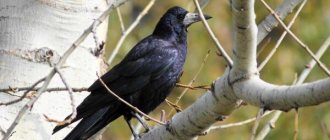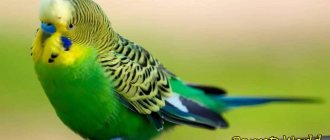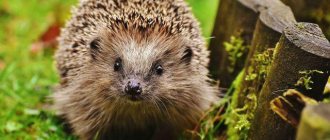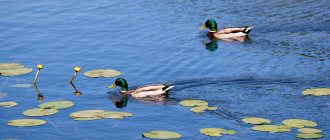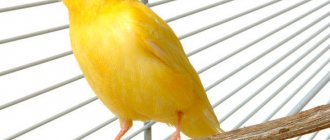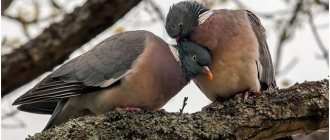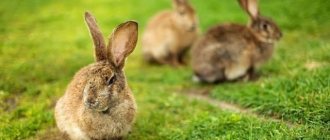How long do pigeons live?
Pigeons are found everywhere. They can live both in megacities and in villages or small towns. Some species live only in the wild. There are also decorative breeds that are kept at home.
Experts report how long pigeons live. This period is 3-15 years. It directly depends on many factors (habitat, diet, presence of natural enemies, etc.).
Home improvement
There are several requirements for the place where pigeons will live. Most important:
It is preferable to make two walls with large windows. Daylight hours for pigeons should last at least 14 hours.
Particular attention should be paid to bedding up to 5 cm thick:
Any bedding should be changed weekly.
Regardless of where the pigeon cage is located - in a special room, in an aviary or on a balcony - it should be convenient and comfortable. To do this, the home must be equipped with the following elements:
Pigeon cages and equipment should be washed periodically with a solution containing detergent. You can disinfect it once every six months - potassium permanganate, lime, and special preparations are suitable. Birds must be isolated during harvesting.
Keeping a pigeon in an apartment is more difficult than in a dovecote or on a balcony
It is important to properly equip the “house” and provide the bird with the opportunity to fly. The pigeon cage should be light and spacious
Birds need to be released periodically. Sporting and flying breeds should be allowed outside.
What factors influence life expectancy
Many factors influence how many years different types of pigeons live. This period depends on living conditions, lifestyle, and climate. It is known that birds in the wild live much less than their domestic counterparts.
Habitat
Climatic conditions and habitat directly affect how long pigeons live. In cold regions, wild birds live shorter lives, as they often die from cold or lack of food.
INTERESTING! It is easier for individuals living in cities to find a warm place to winter, so these birds live longer than those living in the wild.
Owners provide pets with a warm room at a comfortable temperature. For this reason, even in severe frosts they do not die from the cold.
Lifestyle
Free birds are forced to constantly look for safe places to build nests and protect them from predators. Domestic pigeons live in comfortable conditions, which is why their lifespan is noticeably longer.
Nutrition
How long wild or domestic pigeons live is affected by their diet. In nature, they feed only on what they can find on their own.
During the warm season, they have no shortage of food. In summer they feed on berries, seeds, herbs, and insects.
During the cold season, the amount of food available to birds is sharply reduced. Lack of food leads to vitamin deficiencies and weakened immunity. Birds become more susceptible to various diseases and often die due to lack of food.
Birds living in cities rarely go hungry. They can find food in feeders, in garbage containers, in markets, near bus stops. However, such an unbalanced diet can lead to indigestion and other diseases, which shortens life expectancy.
Domesticated individuals live the longest. They receive a fully balanced diet throughout the year. Owners change the composition of feed depending on age and condition.
Health
How many years pigeons live is influenced by the functioning of the immune system. Birds living in the wild often encounter various viruses and infections, which can kill the entire flock in a short time.
Outdoor birds rarely encounter such diseases, since they have almost no contact with migratory and wild birds. Their health and lifespan are often negatively affected not by infections, but by their diet.
INTERESTING! Domestic birds live up to 15 years, but only if the owners comply with all sanitary standards, treat the birds for parasites and monitor their health.
Natural enemies
How long free pigeons live is influenced by the presence of natural or natural enemies. They are hunted by predators such as golden eagles, owls, eagle owls, peregrine falcons, kestrels, etc. They also die in the teeth of foxes, opossums, and raccoons. In cities they are hunted by stray dogs or cats.
Domestic pigeons are rarely killed by predators. However, in villages and towns they may be attacked by kites or peregrine falcons. This happens if the pen is not protected on all sides by a strong net.
Conditions for keeping
How long do cows live: life expectancy of a domestic animal
Pigeons are easy to care for, but to keep them it is necessary to equip a dovecote and a walking aviary.
Requirements for a dovecote
The dovecote should be spacious and bright. The size of the room is calculated based on the number of couples. Each pair should have 50 cm³. The room must be divided into sections intended for different breeds or ages. There should be no more than 15 pairs of birds per compartment. Young animals are also kept separately. The height of the room should be at least 2 m, ideally 2.5 m. The outer walking area is arranged in the form of a square. The entrance for meat birds is located at a height of 30 cm. This structure is designed for landing and departure of birds. The walking area should be surrounded around the perimeter with a fine mesh net.
Plywood is laid on the mesh located in the lower part of the walking area. To provide the birds with the opportunity to move freely, another entrance is built on the outside of the walking area.
Find out how long domestic and outdoor pigeons live on average.
A mandatory nuance is ventilation to prevent drafts. To ensure the influx of fresh air and the outflow of carbon dioxide along with excess moisture, the following should be equipped:
- An additional lattice door immediately after the main one.
- A hood in the ceiling area - it can be built from 2 plastic pipes with a cross-section of 5–10 cm (one for inflow, the other for outflow of air), or you can make a lattice dormer window (necessarily with a shutter to prevent hypothermia in winter).
The air temperature in the room in winter should not fall below +5°C, and in summer it should not rise above +20°C. It is better to build from natural materials, such as wood or plywood. Only the frame can be made of metal. The flooring is made of boards. In winter it is covered with hay or straw.
When constructing a roof, special attention should be paid to hydro- and thermal insulation.
It is better to form window openings on the south or southeast side. Important! If you plan to make the entire building out of metal, or use it as a roof, you need to take care of thermal insulation. This material has high thermal conductivity, so it will be too hot in the dovecote in summer, and cold in winter.
This material has high thermal conductivity, so it will be too hot in the dovecote in summer and cold in winter.
Perches are arranged at a distance of 30–50 cm from the ceiling. They are made from long beams 5 cm wide and equipped with sides made of thin-walled slats. Perches are placed in rows gradually descending. Perches are divided into nests, which are wooden boxes. Each cell is separated by a wall. Nest dimensions 40×35×75 (width, height, length). The nests are left empty - the birds themselves will take care of their arrangement, the main thing is to leave them a sufficient amount of soft hay, straw and branches on the floor.
It is better to choose bunker type feeders. They can be bought in specialized stores. In addition to them, you should install a couple of troughs for mineral feed. To supply water, a drip system should be installed. Install feeders and drinkers on the opposite side of the nests.
Electricity must be supplied to the room. There is no need to install a heating system in the dovecote for the winter. With the onset of autumn and a decrease in temperature, the cracks should be well insulated using available materials, for example, mineral wool. Also, during the cold period, more frequent replacement of the floor mat will be required - approximately once every 1-2 weeks, depending on the humidity level.
Disinfection of the pigeon coop
Preventive disinfection is carried out once every 2 weeks throughout the year. First, all birds are removed from the premises. Then remove the bedding and wash the entire room from the inside with soapy water. Drinkers and feeders are disinfected in the same way. Immediately after wet cleaning, ventilation is carried out, and then a new bedding is laid on the floor.
Important! In case of an outbreak of various diseases, disinfection is carried out using a 3% bleach solution
Habitat and average life expectancy of pigeons
The average life expectancy of wild and domestic pigeons depends not only on their diet and lifestyle, but also on their habitat. These birds are distributed throughout the world, but in warm regions they live much longer.
Where do pigeons live
Not everyone knows where street pigeons live and in what places they hide from bad weather, cold or heat.
These birds find refuge in the following places:
- recesses in wooden or stone buildings;
- trees with a dense crown;
- attics of abandoned buildings;
- rafters and beams of houses;
- cornices or awnings;
- open balconies;
- depressions and niches in rocks.
Pigeons make nests not in trees, like other birds, but in closed, dark shelters. In the city, they choose abandoned attics or balconies, ventilation shafts, recesses in the walls of buildings, and bridge supports.
Homemade
Domestic pigeons are provided with special boxes in which the birds make their own nest. The length, width and height are 20-25 cm. For large livestock, boxes can be placed in one line.
INTERESTING! Special perches and wide shelves for relaxation are installed in the room.
At home, birds are not afraid of either disease or predators. Therefore, the question of how long such pigeons live can be answered: from 10 to 20 years. This period also depends on the conditions of detention and care.
Urban
The lifespan of street pigeons is on average 3-5 years. Such birds often seek shelter in attics, abandoned balconies or under bridges. They do not build full-fledged nests, but simply lay out several branches in a circle and lay eggs between them.
Wild
How long pigeons live in the wild is influenced by their habitat. On average, this period is 2-4 years. Some species live on the coast and in the mountains, while others prefer dense forests. Most of them adapt perfectly to any climatic conditions.
Wild pigeons choose open areas with a good view, but they build nests in secluded places: niches and depressions in rocks, tree hollows, caves, etc.
Record timing
As with any rule, in our case there is an exception - there are birds that live quite a long time. One of the record holders for life expectancy is a pigeon that lives in England. He is now over 25 years old. This bird did not live in the wild and was not a city pigeon; such a long life was provided to it by a woman named Valeria Whittingham. She picked up the bird on the street and was able to go out and feed it.
Before this, the woman had two more birds that died at the ages of 22 and 23 years. The woman provided all her pets with proper care, clean water and vitamins. And it must also be said that all her birds were not domestic pigeon breeds, but were picked up from the street.
Important! From time to time there are pigeons in the world that live more than 20 years.
According to unconfirmed reports, there are pigeons whose age reaches 35 years.
How to determine the age of a pigeon
Experts tell you how long pigeons live and how you can determine their age. Adults are considered to be individuals who are at least 3 years old. Until the age of 7, they remain in the best physical shape, after which their vitality decreases.
REFERENCE! At 9-10 years old, a pigeon is considered elderly. Such birds are no longer used for breeding.
The age of chicks and adults can be determined as follows:
- 6-7 days – plumage begins to appear;
- 9 days - the chick begins to see;
- 30 days – the fledging process is completed;
- 6 weeks - the chick begins to learn to fly;
- 7 weeks – the first molt occurs;
- 2-2.5 months – the chick stops squeaking and begins to coo;
- 5 months – the first sexual instincts appear;
- 7 months – completion of the first molt;
- 1 year – birds have bright plumage, legs and beak have no growths;
- 3-4 years - the plumage becomes duller, the cere enlarges and becomes pronounced, the surface of the paws becomes coarser;
- more than 5 years – the pigment weakens, the color fades.
Young birds can be distinguished by their behavior. They are very active, fly a lot, and coo. They have bright and smooth plumage, the wax does not have any rough growths. Old pigeons move slowly, their color is paler, and rough scales are noticeable on their legs.
Recorded records
The oldest pigeon in the world lives in Great Britain. In 2013, the bird was almost 25 years old, which makes it a real long-lived pigeon. The bird lived with Valerie Whittingham and was rescued by the woman more than 20 years ago.
The oldest pigeon in the world lives in the UK - in 2013 he was 25 years old.
This life expectancy can be explained by Mrs. Whittingham’s great care for her pets: they are provided with food, water, vitamins and good housing. There are no documented records of pigeons living longer than Valerie Whittingham's bird. Therefore, a 25-year-old bird can be considered the oldest. However, there is anecdotal evidence of pigeons supposedly living up to 35 years.
How to extend the life of a bird
The lifespan of domestic pigeons can be extended if the following conditions are met:
- balanced diet;
- free access to clean drinking water;
- a well-equipped room with nests, feeders and resting perches;
- regular disinfection;
- daily walks;
- quarantine for sick individuals.
No matter how long city birds live, this period can be extended if you feed them in the cold season and equip them with comfortable shelters from snow, rain and winds.
